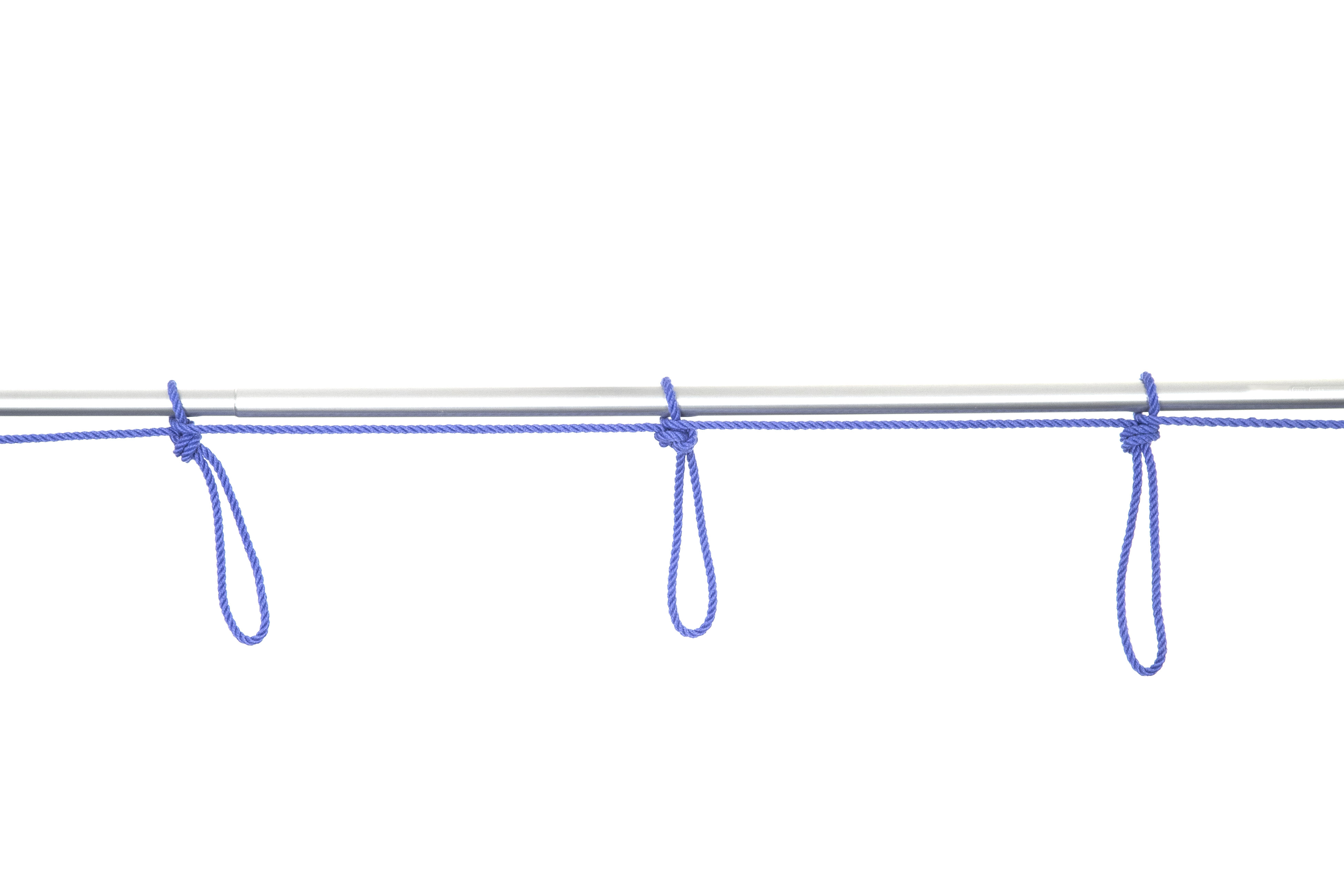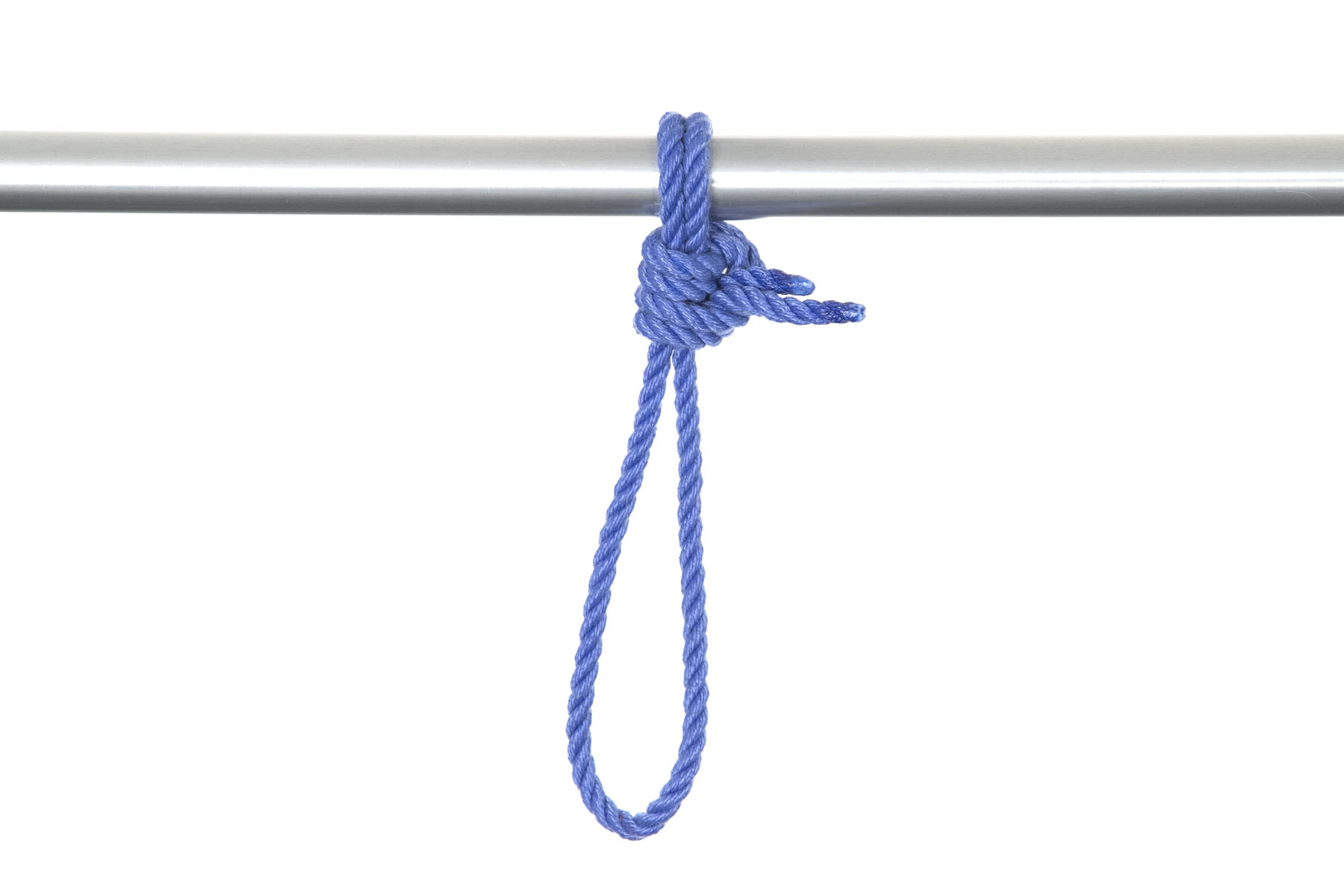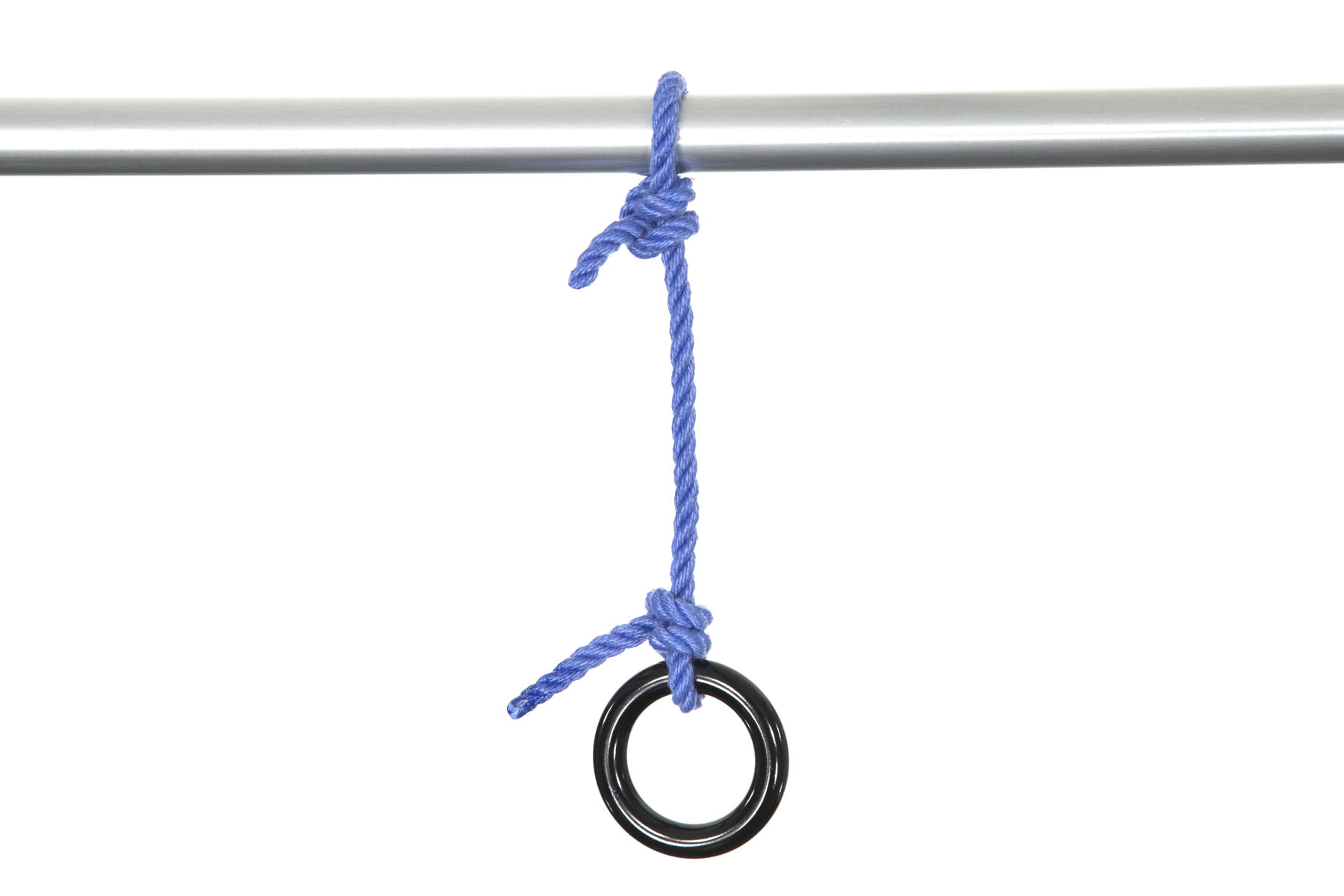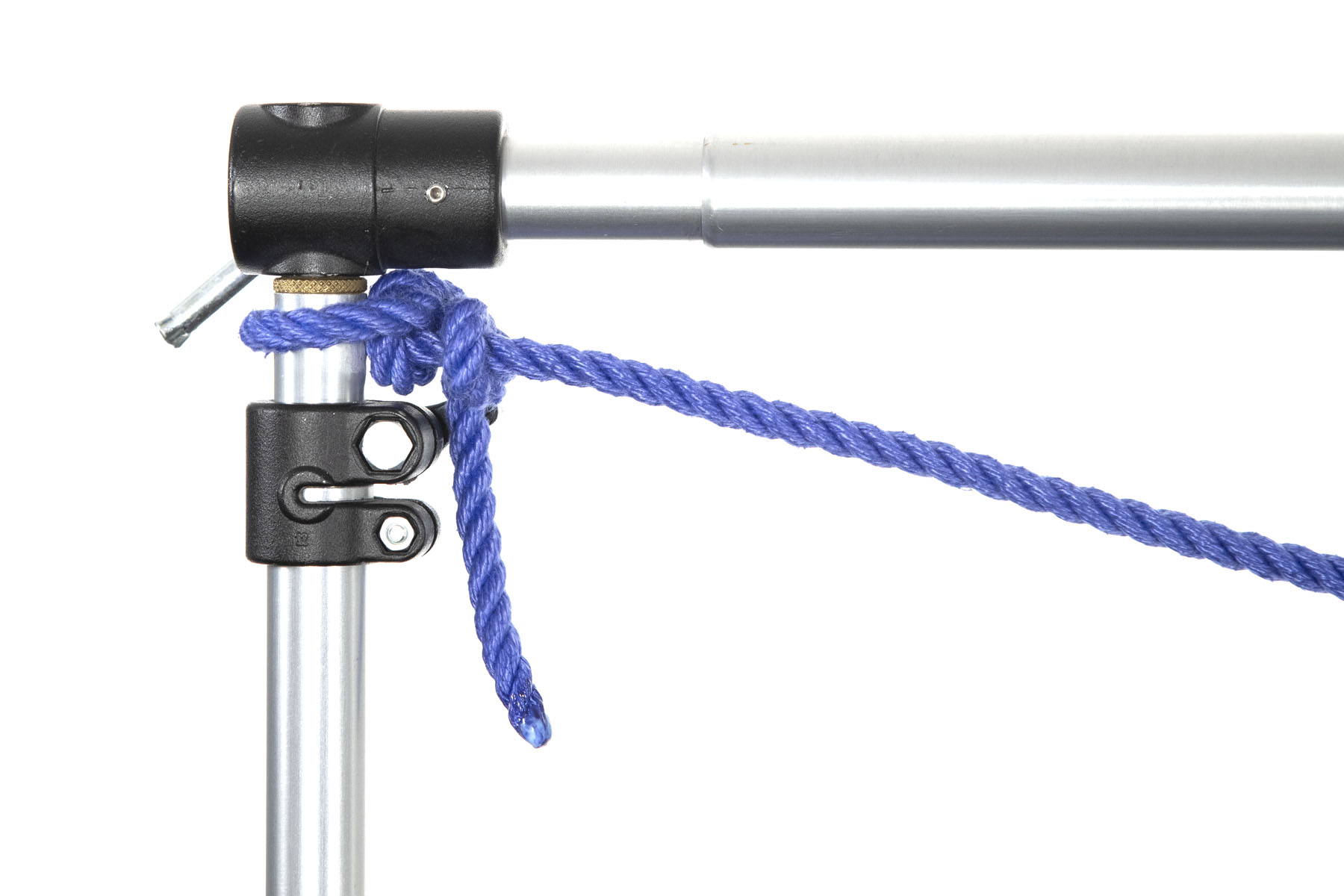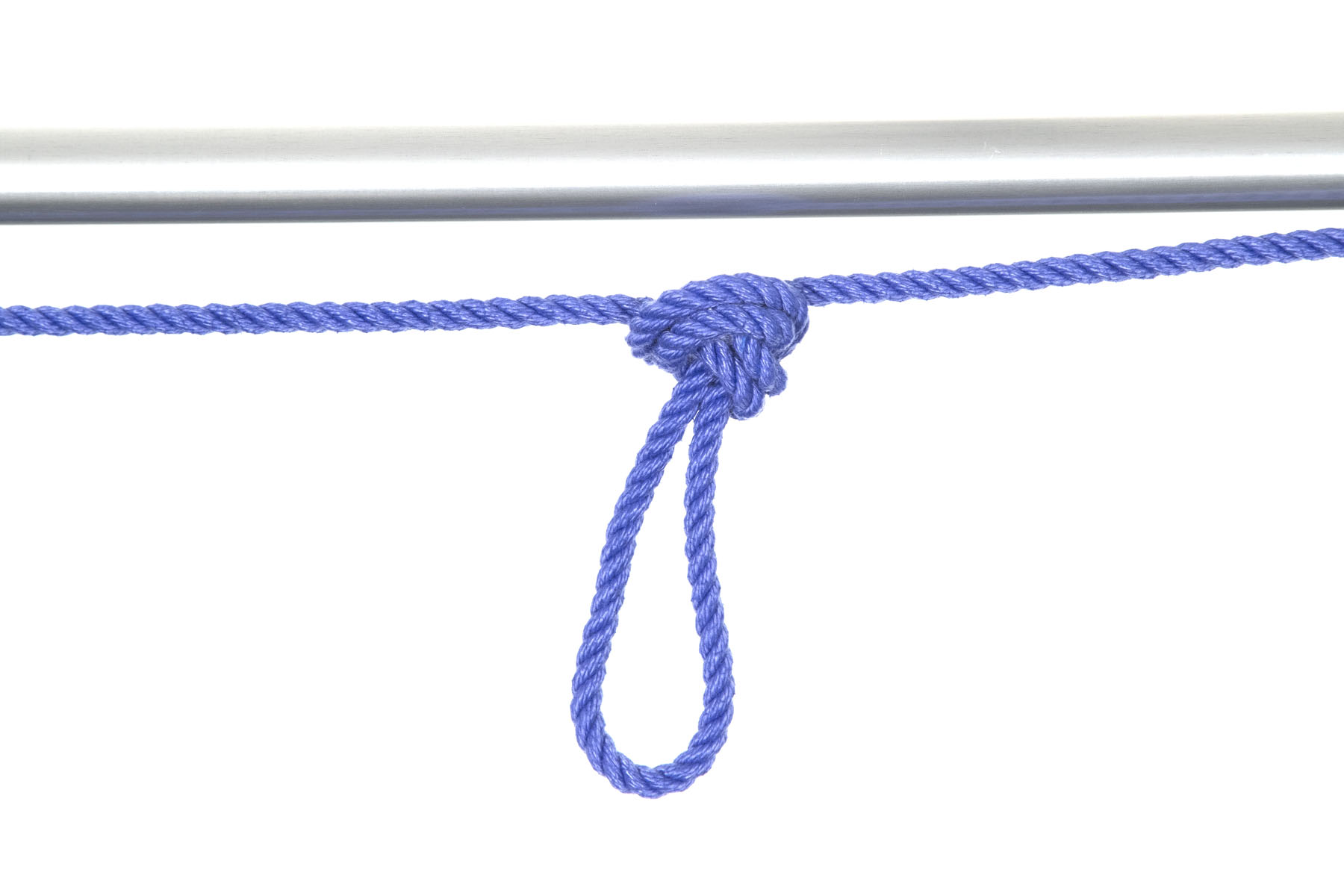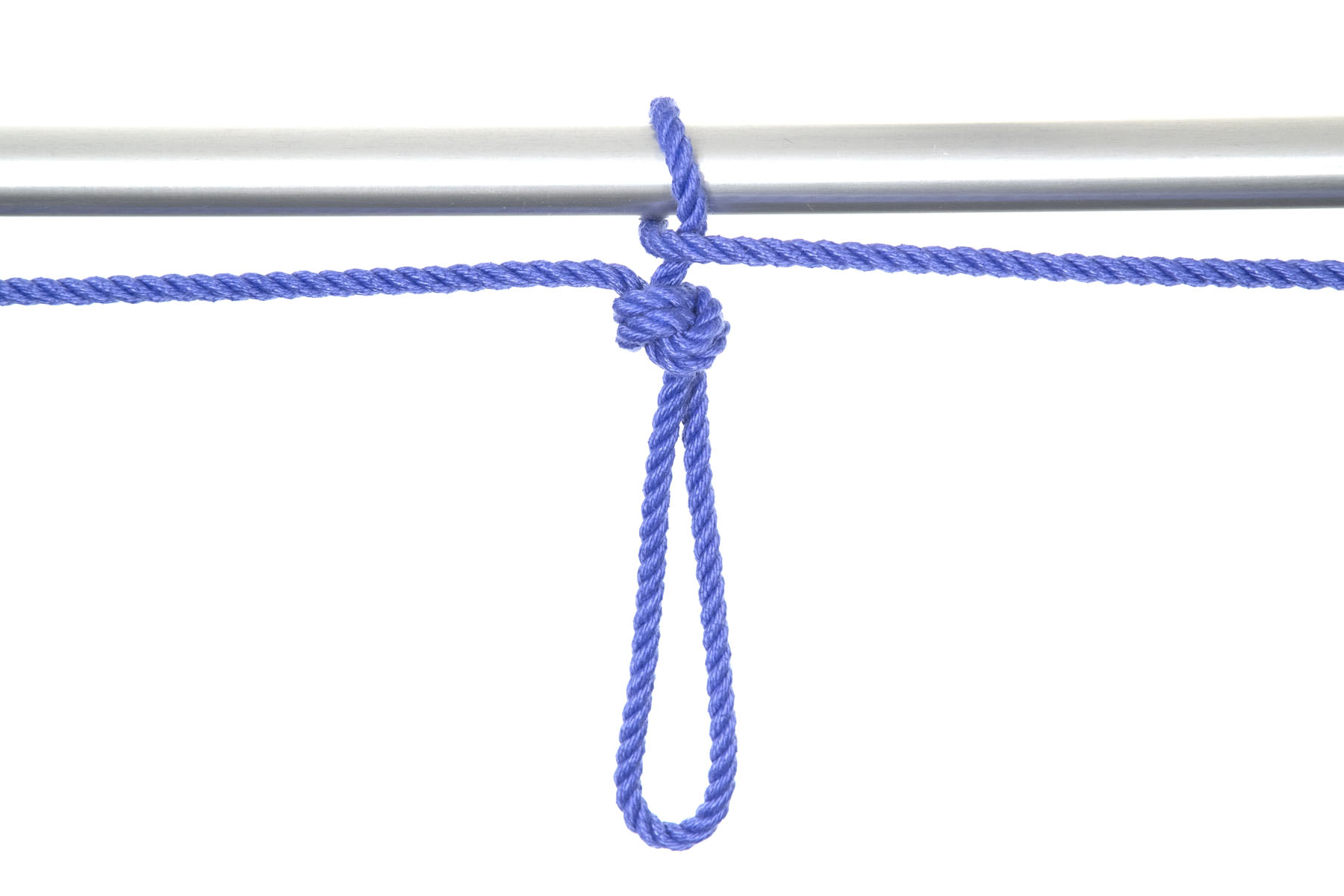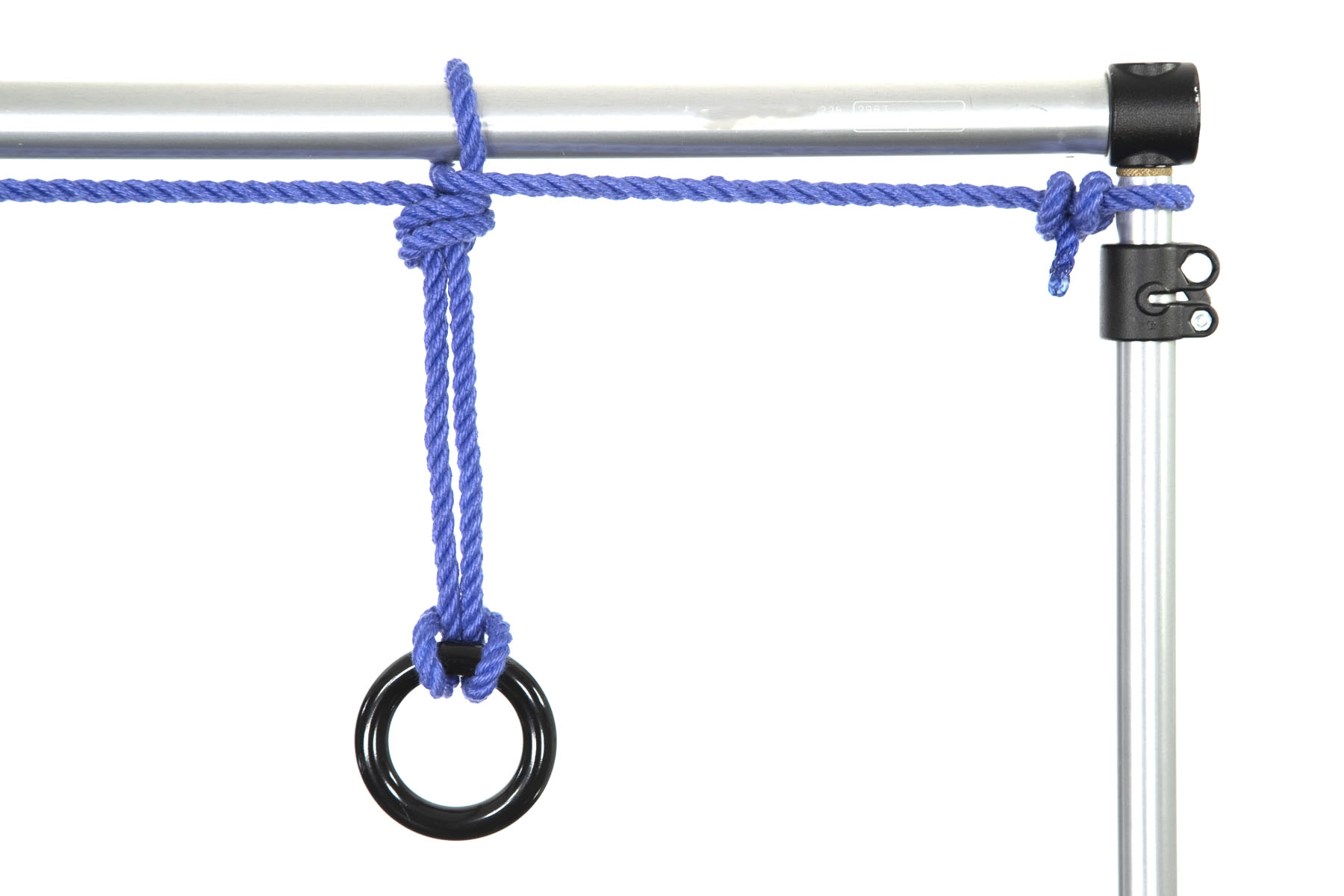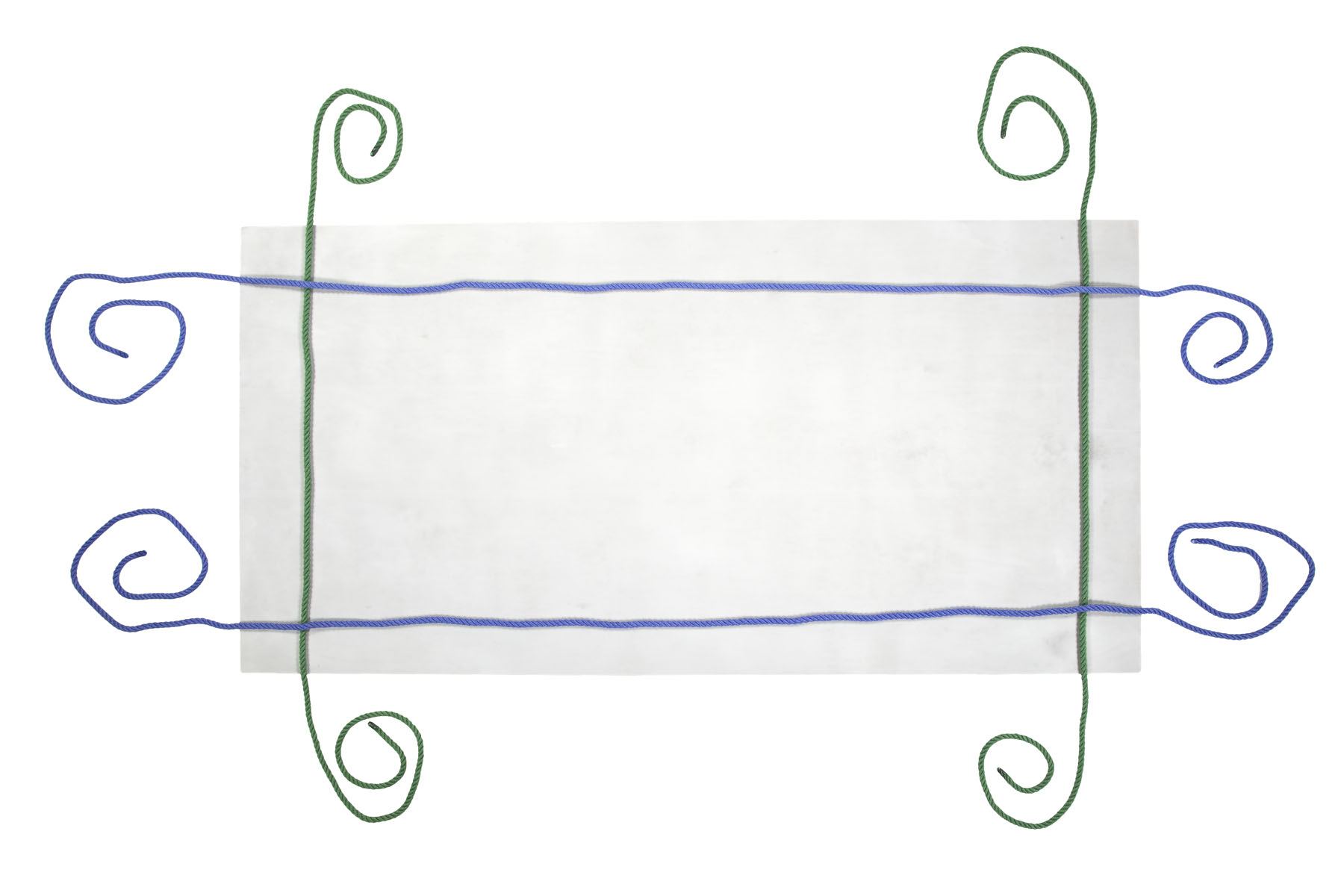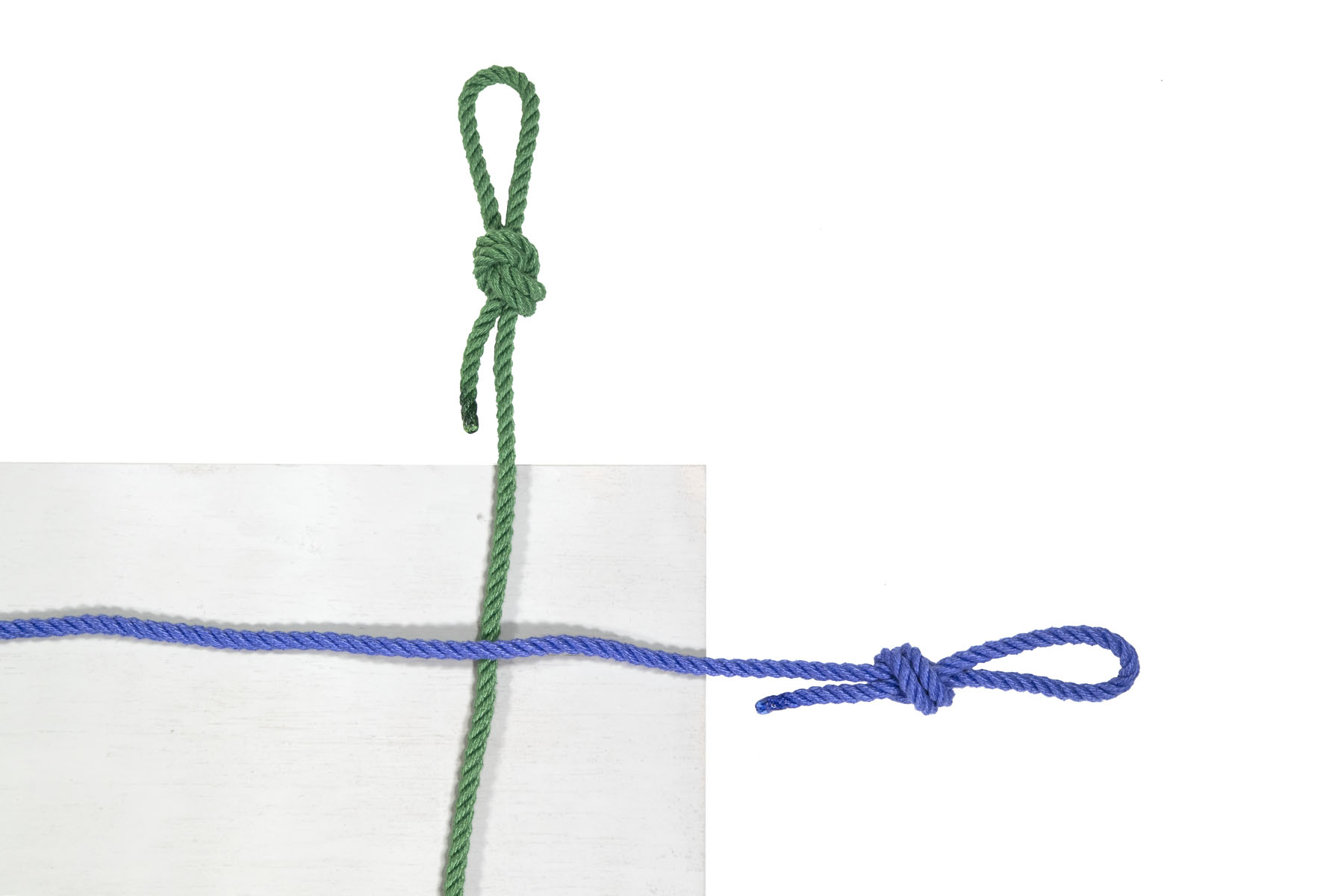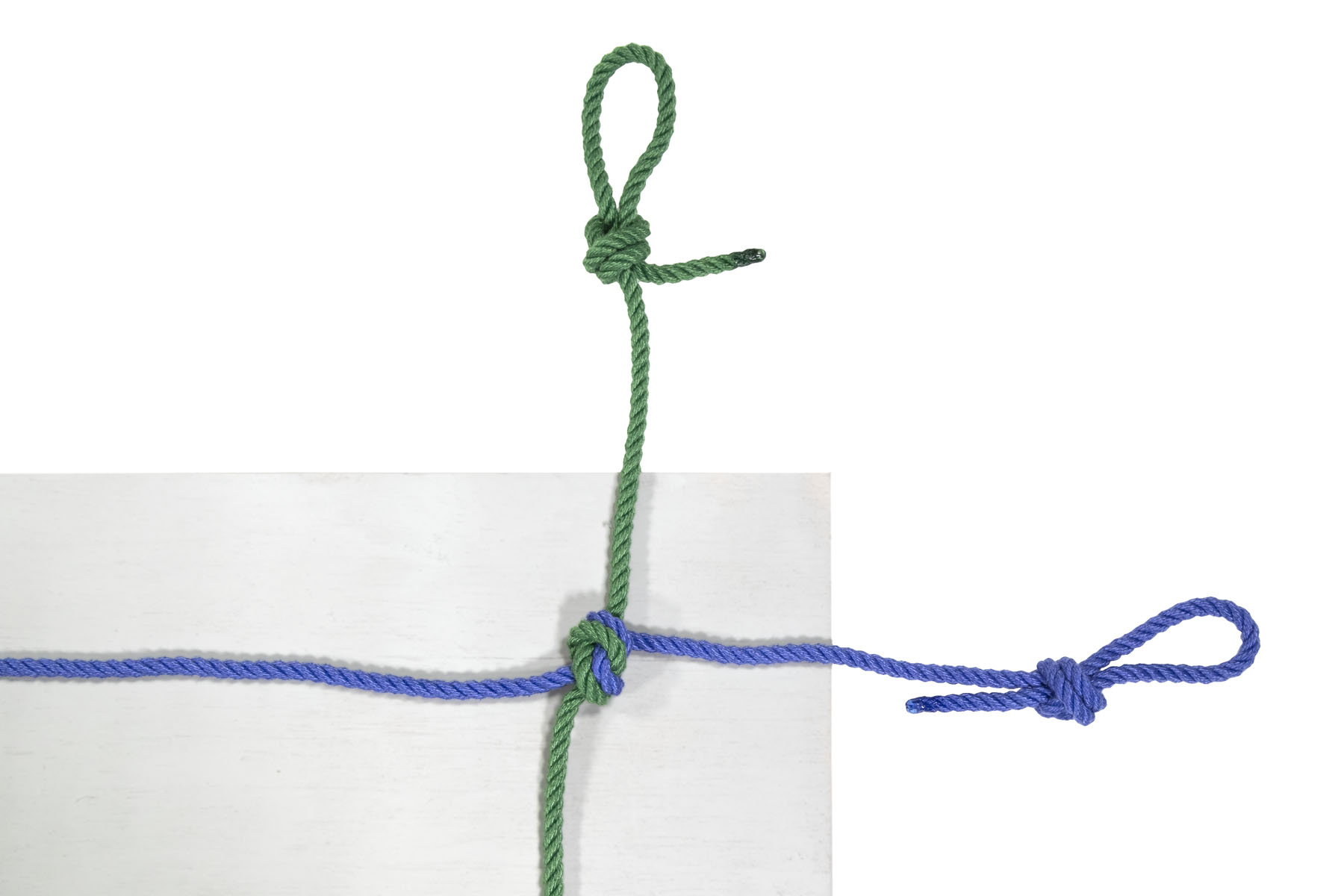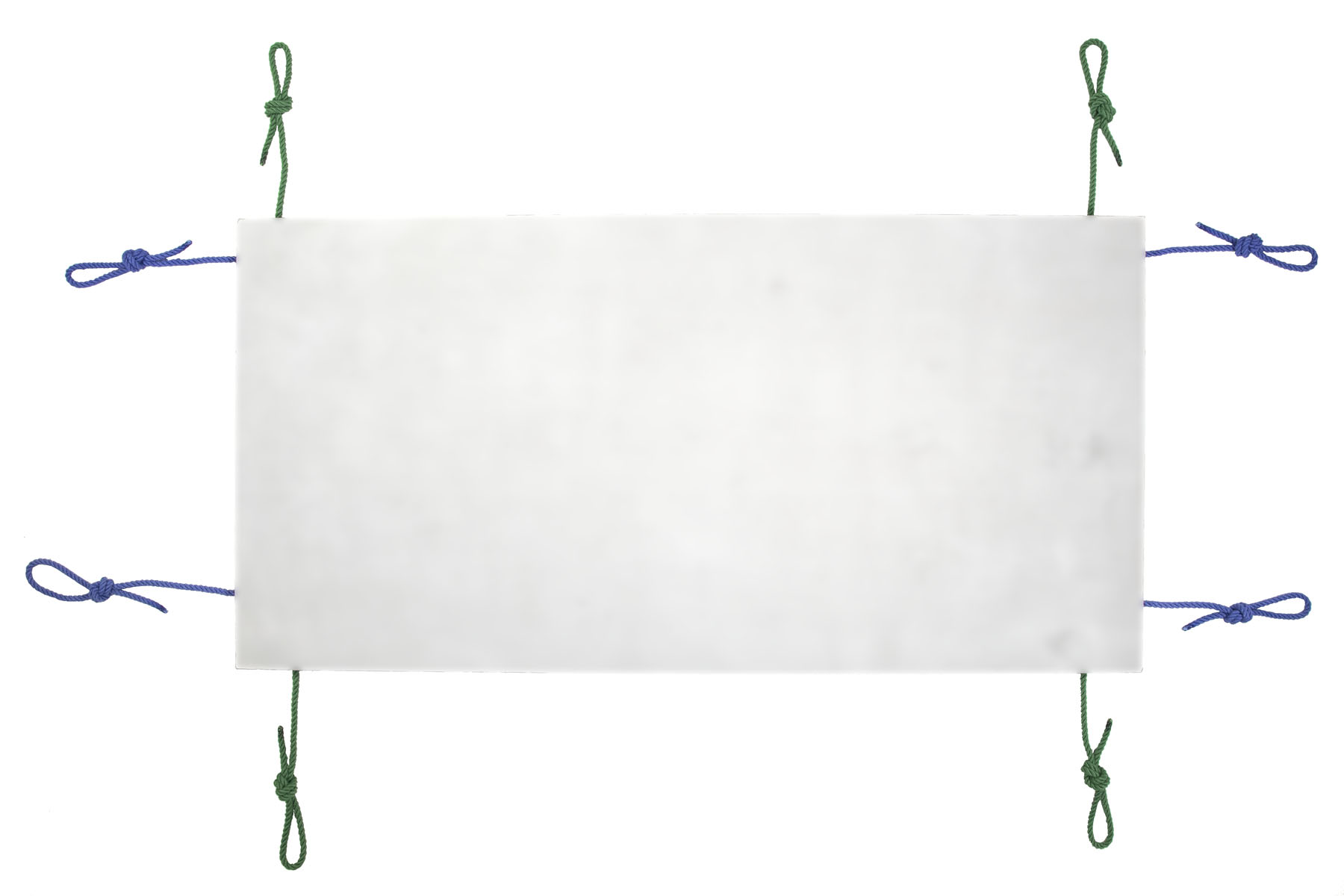Simplest option
The simplest option is to add rope loops to your bed. You’ll want about two feet of rope for each loop. Double the rope and tie the ends to a secure point on your bed using two half hitches.
To keep the rope from sliding around, consider tying to the legs of the bed.
